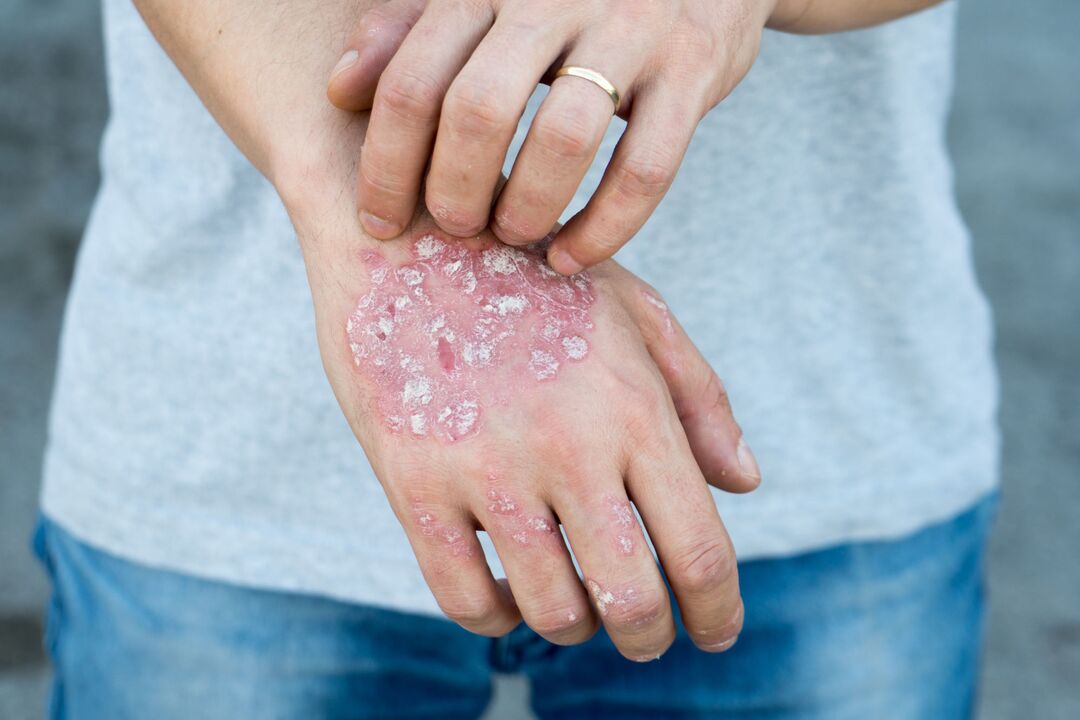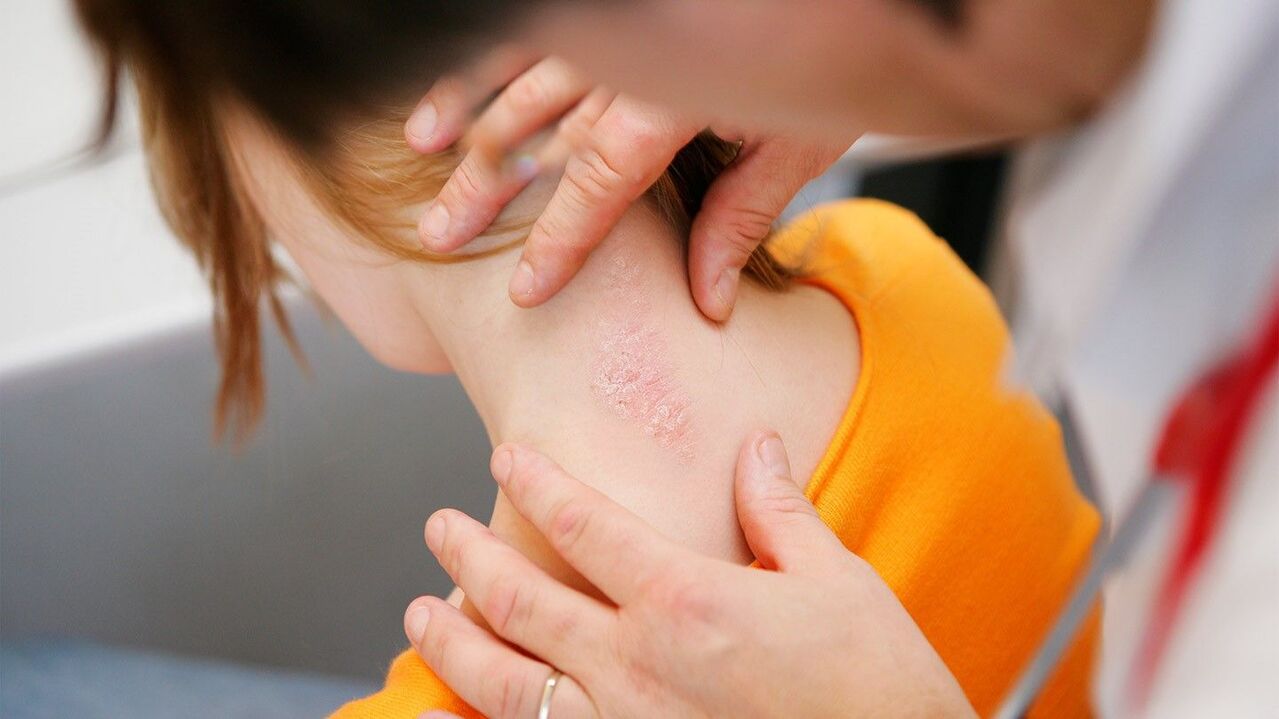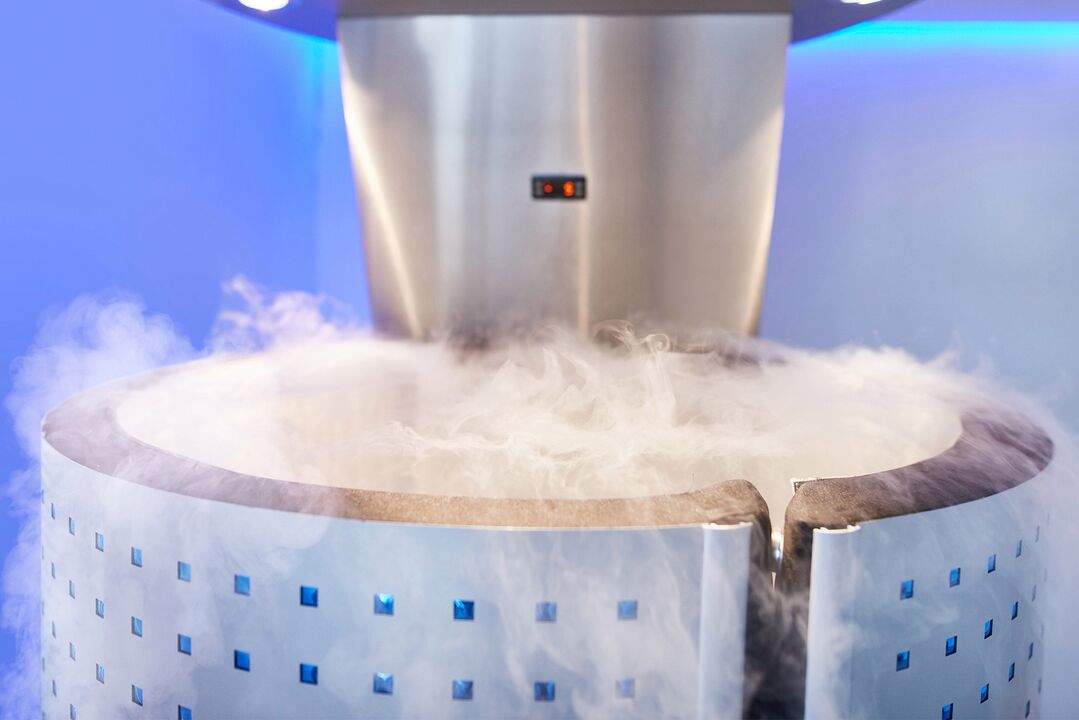Psoriasis is one of the most common skin diseases.According to the International Federation of Psoriasis Associations (IFPA), it is detected in 125 million people worldwide.
In most cases, the disease develops in people of working age: from 15 to 35 years.Men and women often get sick.Despite the widespread prevalence of the disease, not all patients understand what psoriasis is, what causes it and how to treat it.Let's tackle all the questions in order.
Briefly on the main point

Psoriasis is a chronic inflammatory disease of an autoimmune nature, characterized by the formation of specific "plaques" on the skin.The autoimmune mechanism is associated with the production of protective antibodies against the body's own cells, which it mistakenly sees as foreign.Scientists have long established a link between disease and the activation of the immune system, but what causes the failure in self-recognition of cells has not yet been explained with certainty.
A genetic predisposition to psoriasis has been proven: if both parents are sick, then the child has a 50% chance of also having psoriasis.Even some genes responsible for its development have been identified.In addition, the influence of hormonal disorders, nervous tension, metabolic disorders, and viral infections on the manifestation of body psoriatic lesions has been established.
Psoriasis in many cases is combined with diseases of other organs and systems:
- Diabetes mellitus Type 2;
- metabolic syndrome;
- pathology of the liver and biliary tract;
- coronary heart disease;
- arterial hypertension.
Classification and symptoms of psoriasis
The main clinical manifestations of this disease depend on its form and course.

- Psoriasis vulgaris: A characteristic rash appears on the skin, which looks like red areas raised on its surface (called papules) by superficial peeling.Because of this, white scales appear, hence the second name of psoriasis - scaly lichen.If you scrape such an area, you can see the "stearin stain phenomenon" - the number of fragments will increase, which resemble a drop of frozen stearin.After complete removal of the scale, a shiny, moist terminal plate is exposed, where, with further scraping, small drops of blood will appear.This kind of papule is usually located on the scalp, on the extensor surface of the joint.
- Exudative psoriasis: Inflammatory fluid is secreted in the inflamed area, which exfoliates the scale, making it a crust that is difficult to remove.
- Seborrheic psoriasis is typical for skin areas with a large number of sebaceous glands: nasolabial folds, scalp, the area between the shoulder blades, and on the chest.In this variant, severe itchy plaques with yellowish scales are formed.
- The tear form is usually found in children and appears as small red papules with slight peeling.
- Pustular psoriasis is a superficial pustule, usually located on the palms and soles of the feet.
- Common forms: Psoriatic erythroderma, which is indicated by a wide focus covering 90% of the body surface, and tsumbusch psoriasis, accompanied by extensive suppuration foci.With the usual form of the disease, the general well-being also suffers: weakness, malaise appears, and the body temperature rises.
- Psoriatic arthritis is manifested by redness and swelling of the skin over the joints, pain, limited movement in the joints, their deformation, and stiffness of movement after sleep.
- Psoriatic onychodystrophy is a nail lesion.Characteristics are "oil stain symptoms" (yellowish-brown spots under the nail plate) and "thimble symptoms" (point damage on the nail).
How is psoriasis treated?

Methods for treating psoriasis are constantly improved and added, but there is no drug that can defeat this disease forever.Therefore, the main treatment strategies for psoriasis are aimed at:
- reduction in the frequency of exacerbations;
- relief of disease symptoms;
- improve quality of life;
- reduce the possibility of complications and concomitant diseases.
Treatment is usually carried out on an outpatient basis, but some conditions may require hospitalization:
- severe psoriasis variants, worsening the patient's general condition (in particular, erythroderma and pustular psoriasis);
- the presence of complications and concomitant pathologies that worsen the patient's condition;
- The need to use drugs that require regular monitoring of clinical and laboratory parameters.
In the treatment of psoriasis, both local and systemic agents are used.
Local therapy
This type of treatment is represented by ointments, gels, creams that are applied directly to the affected area.
Topical glucocorticoids
This is a hormonal drug that has an anti-inflammatory effect on the skin.In addition, the hormone reduces itching, inhibits the immune response, reduces the spread of the inflammatory process, and prevents the combination of lesions.These drugs are very effective, as proven by many studies.They can be used separately (for local forms) or combined in other ways.
This group includes flucinar, hydrocortisone, elocom, prednisolone, advantan, acriderm.Topical glucocorticosteroids are available in the form of creams, ointments, and lotions.
The disadvantage of such drugs is the risk of developing systemic (general) effects with prolonged use and a large area of exposure.Here are the rules for using these drugs:
- Use only in the shortest course.
- When infection occurs, preference should be given to glucocorticoids combined with antibiotic or antifungal agents.
- Children should not apply hormones to the face, neck, or skin folds.
- It is better to start treating children with weak or moderate drugs (prednisolone, hydrocortisone).
As a rule, hormonal agents are used for psoriatic papules 1-2 times a day for up to 1 month.With their long-term use, adverse reactions may occur:
- burning, redness and itching;
- the appearance of acne;
- local infection;
- thinning, drying of the skin;
- reduction of pigmentation;
- striae.
The skin of the face and groin most often experience complications.
Salicylic acid
Used in combination with local glucocorticosteroids for significant skin peeling.Preparations containing salicylate (DiprosALIC, Acriderm SK, Elokom S) effectively remove peeling plates and help restore the skin.
Vitamin therapy

Vitamin D is an effective treatment for localized forms of psoriasis, as it reduces inflammation and excessive skin cell division.Cream or ointment containing vitamin D3 (Calcipotriol, Daivonex, Calcitriene) is used for plaque 1-2 times a day for about 2 months.It is not recommended to treat large areas of skin with them.Can be used in conjunction with glucocorticoid hormones.
Adverse reactions with local application of Vitamin D3 are rare and are mainly represented by burning, redness and itching of the skin.In this case, I either interrupt the treatment or use the ointment less often.If there is an overdose, systemic manifestations of hypervitaminosis D are possible: decreased bone density and the formation of kidney stones.
Drugs in this group are not prescribed before starting UV therapy.
You can not simultaneously use drugs based on salicylic acid and external vitamin D analogues - this will lead to the activation of the latter and significantly reduce the effectiveness of therapy.
Zinc pyrithione
Preparations in this category (skin-skin, zinocap) are produced in the form of creams, aerosols, and shampoos.They are used not only to treat psoriasis, but to prevent its recurrence.The mechanism of action is antibacterial, antifungal activity, and slows cell division.Medicines can cause allergies, dryness and skin irritation with repeated use.Therefore, the course of treatment should not last more than 1.5 months.
Systemic therapy
This treatment option involves the use of drugs in tablet or injection form;They not only affect the integumentary tissue, but also the internal organs.Systemic treatment is used for moderate and severe psoriasis.
Methotrexate
Drugs from the cytostatic group that stop cell division.It is prescribed for psoriatic arthritis, erythroderma, pustular and rough psoriasis, if it does not respond to other types of therapy.
The dose of methotrexate is selected individually, taken once or several times a week.After the severity subsides, the drug continues to be taken at the minimum effective dose.This drug often causes side effects, so this treatment requires constant medical supervision.Possible adverse reactions:
- reduction in the number of all blood cells;
- appetite suppression, nausea, vomiting;
- the formation of ulcers and erosion in any part of the digestive system;
- damage to the liver and pancreas;
- headache, drowsiness, convulsions;
- visual disturbances;
- kidney dysfunction;
- suppression of the process of formation of germ cells;
- decreased libido;
- joint and muscle pain;
- non-infectious pneumonia;
- Allergic reaction.
This medication is discontinued if shortness of breath, cough, development of severe infectious disease, anemia, or significant increase in blood markers of kidney or liver failure occurs.
Cyclosporine
Medicines that suppress the function of the immune system.Given the autoimmune nature of psoriasis, such therapy is allowed, however, a general decrease in immunity often leads to infectious and oncological complications.Therefore, this drug is rarely used as maintenance therapy, but is only prescribed during augmentation.Start taking cyclosporine with a minimal dose, which is then increased until the desired result is obtained.
Adverse reactions to cyclosporine:
- impaired kidney function, swelling, increased blood pressure;
- toxic effects on the liver and pancreas, nausea, loose stools;
- the formation of malignant tumors and lymphoma;
- reduction in the number of blood cells;
- muscle pain, cramps;
- headache;
- allergies.
The use of cyclosporine requires constant medical supervision, regular blood tests and necessary examinations.
Retinoids
Retinoid (acitretin, isotretinoin) is a derivative of vitamin A that has a normalizing effect on the process of division and keratinization of skin cells.The course of treatment with the drug is an average of 2 months, the dose is selected individually.When using retinoids, there is also a risk of unwanted reactions:
- drying of mucous membranes;
- peeling skin;
- fungal vulvovaginitis;
- hair loss, thinning, brittle nails;
- muscle and joint pain;
- liver inflammation, jaundice;
- Nausea, stool disturbance.
Although there are possible side effects, these drugs are safer than the previous options, especially considering that all these complications can be reversed and disappear some time after stopping the drug.Retinoids are not prescribed together with methotrexate, as this increases the risk of damage to the liver structure.
Monoclonal antibodies
Monoclonal antibodies (infliximab, adalimumab, efalizumab) are biological products of genetic engineering that are antibodies.They have the ability to suppress autoimmune processes and reduce inflammation.These drugs are administered either subcutaneously or intravenously no more than once a week.Their negative effects on the body are mainly associated with the suppression of the immune response:
- the addition of infection of any localization;
- benign and malignant neoplasms;
- allergic manifestations;
- headache, dizziness;
- depression;
- nausea, vomiting;
- joint and muscle pain.
The use of drugs in this category may be in combination with methotrexate.
Systemic glucocorticoids
Systemic glucocorticoids (prednisolone, dexamethasone) are used exclusively in the treatment of psoriatic arthritis and the general form of the acute disease in injections and droppers.But in this case, the course of hormone therapy should not be long due to the risk of worsening the process and the development of pustular forms.
Additional drug treatment
This group includes drugs necessary for the correction of concomitant conditions that aggravate psoriasis, and for the treatment of the articular form of the disease.
- Psychotropic drugs are used because of the high frequency of psoriasis against the background of unstable nervous conditions.In particular, antidepressants (amitriptyline, fluoxetine, venlafaxine) and anti-anxiety - sedatives (diazepam, phenazepam, buspirone) are prescribed.Antidepressants are usually prescribed for prolonged depression and stress and are taken in long courses.Tranquilizers can be taken once, on demand, depending on external conditions.This group of drugs suppresses anxiety, agitation, susceptibility to stress factors, and normalizes sleep.However, it should be remembered that the drugs also have their contraindications for use and adverse reactions, which do not always allow them to be taken simultaneously with the main therapy for psoriasis.
- Nonsteroidal anti-inflammatory drugs are used in the complex therapy of psoriatic arthritis to reduce the inflammatory response, swelling, and pain.This product is produced in the form of tablets, injection solutions, gels and ointments for external use.Due to the negative effect on the gastrointestinal tract (ulcer formation), these drugs are prescribed for the shortest course.
- Antihistamines are sometimes used to reduce skin itching.Drugs prescribed from the first generation (Tavegil, suprastin), second (fenistil, claritin) or third generation (Zyrtec, Erius).The effectiveness of these drugs is largely comparable, however, third-generation drugs do not have the same side effects as antihistamines, such as increased drowsiness.
Physiotherapy for psoriasis
Ultraviolet radiation (UVR) involves exposure to radiation with a wavelength of 311-313 nm on the whole body or on individual parts.This technique should not be used for severe forms of psoriasis and its summer variety, as it can only worsen the process.
Selective phototherapy (PUVA therapy) is a type of ultraviolet radiation, but the wavelength used in this case is 310-340 nm.This physiotherapy option, when used regularly, allows you to achieve long-term remission.One session can last up to 2 hours, and the recommended total number is 35. After the procedure, dry skin may appear, which requires the use of moisturizers.PUVA therapy has several contraindications, such as kidney failure, diabetes mellitus, and skin tumors.
X-ray therapy involves treating the skin with soft X-rays, which help fight itching and new plaque formation.
Ultrasound treatment involves exposing the skin to ultrasonic waves, which have anti-inflammatory, antibacterial, analgesic, and antipruritic effects.One procedure lasts 15 minutes, does not cause discomfort and is well tolerated.A total course of 14 procedures is recommended.
Electrosleep affects the course of psoriasis indirectly, improving the patient's mental state.This manipulation causes a calming effect, improves sleep, increases resistance to stress, and reduces excessive excitability of the nervous system.Sessions can last up to 1 hour, it is recommended to carry out at least 10 procedures.
Psychotherapy
The role of an unstable mental state in the development of psoriasis has been proven by many studies.Various stresses, anxiety, fears, and experiences often cause the appearance or severity of psoriasis in people with a genetic predisposition.Therefore, psychotherapy is important to prevent exacerbations and generally reduce the frequency of relapses.
During the session, the specialist talks to the patient, asks the main questions and tries to establish the cause of the psychological problem.The next session aims to stabilize the patient's emotional state.A psychotherapist can teach you to cope with stress at work and at home, find outlets for negative energy, and develop a positive attitude towards yourself and the world around you.
Therapeutic nutrition for psoriasis
Patients with psoriasis are recommended:
- Drink more fluids: 7-10 glasses of still water or freshly squeezed juice every day.
- Eat more fruits and vegetables: grapes, nectarines, cherries, pineapples;Beets, carrots, cucumbers, cabbage, garlic, onions, dill, cumin.
- Do not forget about the protein component of the diet: chicken eggs, lean meat, nuts, legumes.
- There are only natural sweets: dried apricots, dates, raisins.
- Do not use citrus fruits, tomatoes, red peppers, strawberries, honey.
- Avoid chocolate and whole milk with high fat content.
- Do not drink alcohol, caffeine, spicy, salty, smoked food.
Alternative methods to combat psoriasis

- Cryotherapy is the effect on the body of ultra-low temperature, which can be local and general.The mechanism for improving the condition of psoriasis is the body's short-term stress response to cold.Against this background, rapid narrowing and subsequent expansion of blood vessels occurs, which leads to increased blood flow and decreased inflammation.In addition, low temperatures significantly slow down the speed of nerve impulses and prevent the formation of new lesions.General cryotherapy is carried out using a special cryochamber, where a person can stay for no more than 3 minutes.The temperature inside is set in the range of -110 --130 ° C. The entire course should not exceed 30 procedures.Local cryotherapy is carried out by exposing the skin area with psoriatic plaques to liquid nitrogen vapor (temperature -140 -160 ° C).In the course of research, it was found that after the course of the procedure, psoriatic papules become pale, decrease in size, peel and itching disappears.
- Hydrotherapy is widely used in sanatoriums with thermal waters.The Garra Rufa fish that live in the water eat the coarse particles and scales from the surface of the skin, leaving healthy areas untouched.
- Plasmapheresis is a rather complex process that involves taking blood from the patient's body, cleaning it from toxins, immune complexes, microorganisms and returning it to the general bloodstream.A special centrifuge is used to clean the blood.The positive effect of plasmapheresis in psoriasis is associated with the removal from the bloodstream of immune complexes that support autoimmune reactions, breakdown products formed as a result of chronic inflammation, as well as microorganisms and their toxins when secondary infections occur.
- Mud therapy is an effective way to improve the health of patients with psoriasis.Due to the significant content of mineral salts, therapeutic mud suppresses inflammatory processes, promotes tissue regeneration, and softens rough areas of the skin.Mud therapy allows you to achieve better results in the treatment of psoriatic arthritis.Before applying to the skin, the mud is heated to 39 ° C, then a thin layer is spread on the area covered with plaque and left for 30 minutes.At the end of the procedure, the dirt is washed off with warm water, and the skin is lubricated with a softening cream.
Traditional medicine recipes for psoriasis
Folk remedies for the treatment of psoriasis come in two groups: preparations for oral administration and external drugs.The first category includes:
- Tincture of Celandine.Herbs of this plant can be found in pharmacies.2 tablespoons.L. Dry herbs are poured with 500 ml of alcohol or vodka and allowed to try it for 10-14 days.Then the tincture is filtered and taken 20 g 3 times a day.
- Bay Leaf Decoction.Put 15 bay leaves in 1 liter of boiling water and boil for about a quarter of an hour.Then filter, cool and drink 1 tbsp.L. 3 times a day for 1 month.
- Dill seeds.2 tablespoons.L. Seeds, pour 1 glass of boiling water, let it steep for about three hours, filter, drink ½ glass 2 times a day.
- Flax seeds.1 tablespoon.L. Seeds, pour a glass of boiling water, stir, leave overnight, take in the morning, before breakfast.
External traditional medicine for the treatment of psoriasis:
- Fish oil.Apply a thin layer to the papules and leave for half an hour, then wash with warm water.
- Linseed oil.Apply to the affected area up to 6 times a day.
- Egg ointment.Beat 2 chicken eggs, add 1 tbsp.L. Sea buckthorn or sesame oil and 40 g of vinegar.Lubricate the plaque 3 times a day.
- Propolis-tar ointment.30 g of propolis and 50 g of tar are heated in a water bath and stirred.Apply to the psoriatic rash up to 4 times a day.
Keep in mind that no matter what alternative methods and folk methods you use in the treatment of psoriasis, they cannot replace the main, traditional therapy.All medications used for psoriasis must be prescribed by a doctor.Under no circumstances should you self-medicate or change the dosage and regimen of the drug according to his will.























